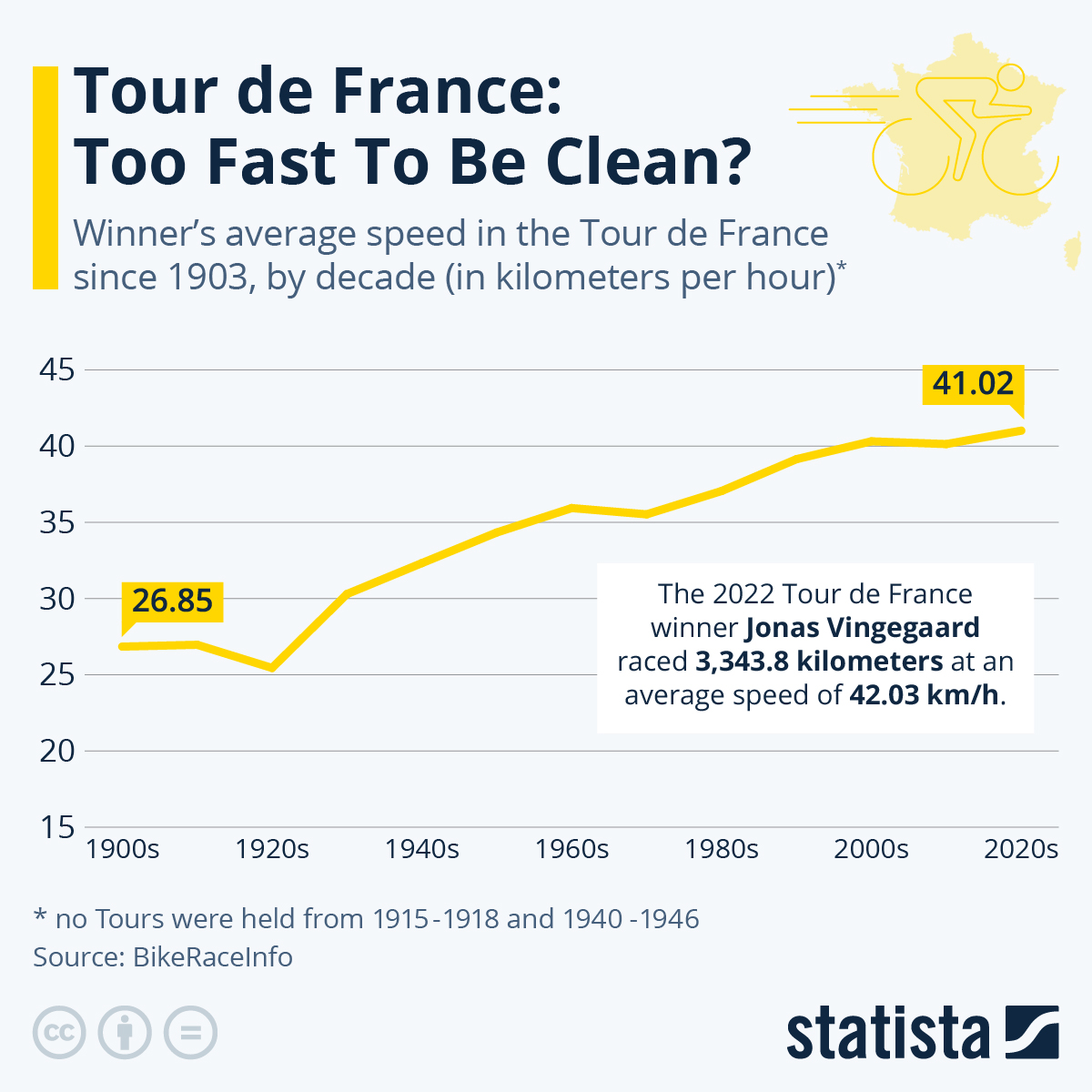
As the cycling world gears up for arguably the most prestigious event of the sport, Statista's Felix Richter takes a look at how the average speed of the Tour de France winner has evolved over the years.
Despite the blistering heat in France, Jonas Vingegaard of Denmark finished the 3,343.8 kilometer race last year at a record speed of 42.03 km/h (26.12 mph), beating the previous record set by one Lance Armstrong in 2005 by 0.38 km/h.
“Every day was quick, fast, it’s been rough. There has been a lot of attacking. It must have looked good on television,” Vingegaard said after his maiden triumph.
And while the average speed is influenced by routing as well as equipment advancements, it's only natural for records like that to raise some suspicions given cycling's (deservedly) bad reputation.
You will find more infographics at Statista
As this chart shows, the Tour de France has not slowed down since the doping-infested years of the early 2000s.
Whether that's due to super-fast carbon bikes, spectacular routes or the use of performance-enhancing substances is a question that only time will be able to answer.
As the cycling world gears up for arguably the most prestigious event of the sport, Statista’s Felix Richter takes a look at how the average speed of the Tour de France winner has evolved over the years.
Despite the blistering heat in France, Jonas Vingegaard of Denmark finished the 3,343.8 kilometer race last year at a record speed of 42.03 km/h (26.12 mph), beating the previous record set by one Lance Armstrong in 2005 by 0.38 km/h.
“Every day was quick, fast, it’s been rough. There has been a lot of attacking. It must have looked good on television,” Vingegaard said after his maiden triumph.
And while the average speed is influenced by routing as well as equipment advancements, it’s only natural for records like that to raise some suspicions given cycling’s (deservedly) bad reputation.
You will find more infographics at Statista
As this chart shows, the Tour de France has not slowed down since the doping-infested years of the early 2000s.
Whether that’s due to super-fast carbon bikes, spectacular routes or the use of performance-enhancing substances is a question that only time will be able to answer.
Loading…





